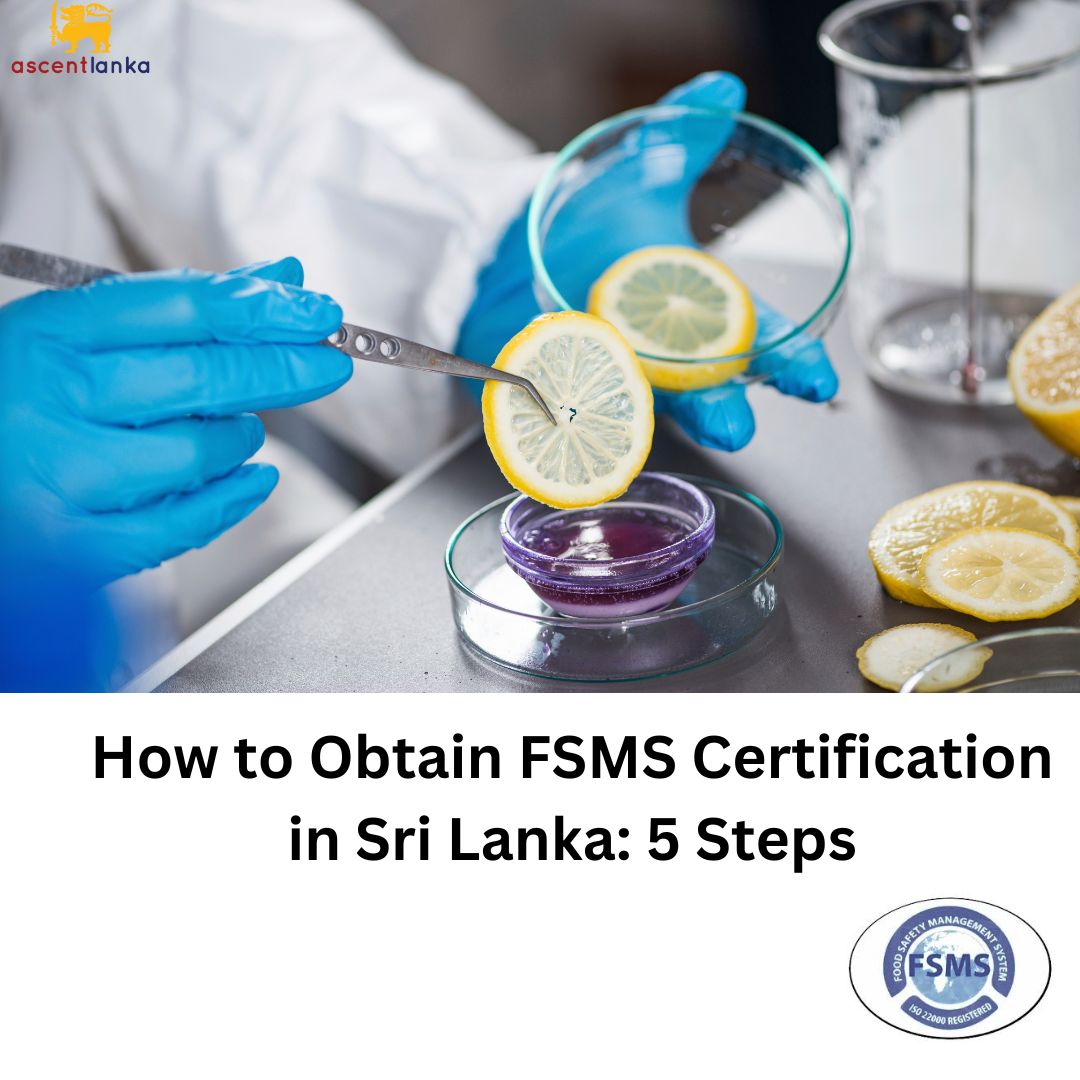
Published: May 22, 2025
How to Obtain FSMS Certification in Sri Lanka: 5 Steps
Food safety is a critical concern across the globe, and Sri Lanka is no exception. With growing awareness among consumers and increased regulatory requirements, businesses in the food industry must prioritize food safety management. One of the most effective ways to demonstrate this commitment is by obtaining FSMS (Food Safety Management System) certification, such as ISO 22000.
FSMS certification helps organizations ensure food safety at every stage of the food chain, from farm to fork. Whether you're a food manufacturer, processor, distributor, or caterer in Sri Lanka, here’s a step-by-step guide to achieving FSMS certification:
Step 1: Understand the FSMS Requirements
Before initiating the certification process, it’s essential to understand what FSMS entails. ISO 22000 is the most widely recognized FSMS standard, combining key elements of food safety such as:
- → Interactive communication across the food chain
- → System management
- → Prerequisite programs (PRPs)
- → Hazard Analysis and Critical Control Points (HACCP)
In Sri Lanka, this standard is applicable to all types and sizes of organizations in the food sector. Gaining a clear understanding of ISO 22000 requirements will help you assess your current practices and identify gaps.
Step 2: Conduct a Gap Analysis
Once you are familiar with the standard, the next step is to assess your existing food safety system. A gap analysis compares your current processes against the ISO 22000 requirements.
You can perform an internal review or hire an FSMS consultant in Sri Lanka to assist. The goal is to identify areas where your food safety practices fall short and need improvement. This step provides a clear roadmap for aligning your system with ISO standards.
Step 3: Implement the FSMS Framework
After identifying the gaps, begin implementing the necessary changes. This typically involves:
- → Establishing a food safety policy
- → Conducting risk assessments
- → Defining control measures and monitoring plans
- → Training employees on food safety practices
- → Documenting procedures and records
Documentation and consistent execution are key here. All practices must be aligned with ISO 22000’s process-based approach to ensure food safety at every level.
Step 4: Internal Audit and Management Review
Before applying for certification, conduct an internal audit to ensure your FSMS is effectively implemented and compliant with ISO 22000. This internal audit should cover:
- → Compliance with PRPs and HACCP principles
- → Effectiveness of control measures
- → Training records
- → Non-conformities and corrective actions
After the audit, a management review should be conducted to evaluate the overall performance of the FSMS. These steps help in identifying and resolving any final issues before the official audit.
Step 5: Certification Audit by an Accredited Body
The final step is to select a reputable and accredited certification body in Sri Lanka to conduct the certification audit. The audit is generally carried out in two stages:
- → Stage 1: Document review and preparedness check
- → Stage 2: On-site audit to verify implementation and compliance
Upon successful completion of both stages, you will receive your FSMS (ISO 22000) certification.
Final Thoughts
Getting FSMS certification in Sri Lanka is a strategic move for any food-related business aiming to improve its credibility, consumer trust, and compliance. By following these five steps—understanding the requirements, analyzing gaps, implementing the system, auditing internally, and passing the certification audit—you’ll be well on your way to a safer and more successful food operation.


Leave a comment below: